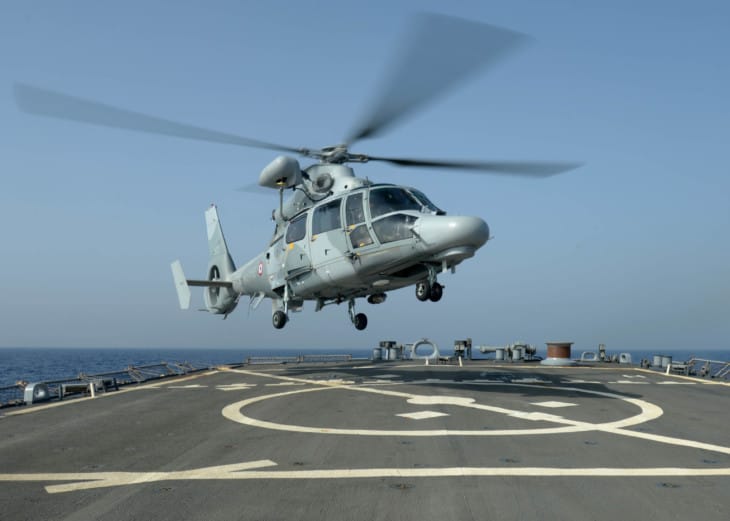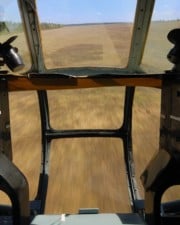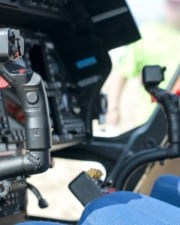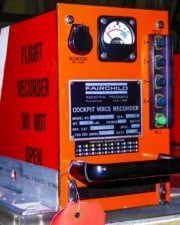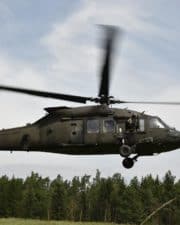Helicopters are marvels of modern engineering. They are some of the most graceful and maneuverable aircraft in the world—but they’re also some of the most complex and most challenging to operate. Have you ever looked up and wondered how helicopters make lift?
Where airplanes make lift by using their forward speed to move air over their airfoil-shaped wings, helicopters rotors are airfoils, and instead of moving the aircraft, the rotors are spun by the engine. This isn’t unlike the propeller of an airplane, but they point up towards the sky and make lift, not thrust.
This article on how helicopters turn is part of a series on helicopter flight. Also read:
Basics of Lift — Helicopters
Like most aircraft, helicopters use airfoils to make lift. An airfoil is a shape commonly found in the cross-section of an airplane’s wings. The rotor blades that spin on top of a helicopter are also airfoils.
The shape of an airfoil controls the flow of air around it. Its primary purpose is to accelerate the air that passes over the top of the airfoil.
Even though airplanes and helicopters make their lift in different ways—an airplane must move its wings forward while a helicopter spins its rotors with its engine—both airfoils produce lift using the same principles.
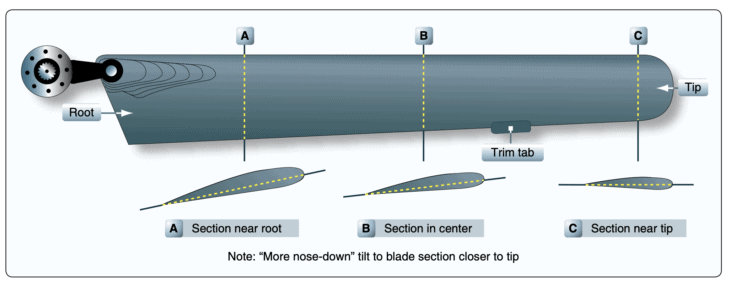
Bernoulli’s Principle
Bernoulli’s principle is the foundation by which most modern flying machines make lift. It is basically how airfoils work, and airfoils are found on airplanes, helicopters, autogyros, and vertical-lift aircraft.
According to the principle, the pressure exerted by a fluid is reduced as the speed of that fluid increases. While it’s easy to visualize it apply to water, it’s important to realize that the scientific definition of fluid is any substance that takes the shape of its container. This definition illustrates how the principle applies to air and aircraft.
On an aircraft, the shape of an airfoil manipulates the air flowing around it. The curved upper surface makes the air move faster, thereby reducing its pressure. The pressure difference created between the higher pressure below the airfoil and the lower pressure over it is the amount of lift being generated.
Helicopter rotor blades are airfoils. As they spin, the air above them is reduced in pressure, creating a lifting force.
Newton’s Third Law
Not all of the lift comes from Bernoulli’s Principle, however. Another important component of lift comes from the angle at which the airfoil meets the air. This angle, known as the angle of attack, can be changed by the pilot.
As the angle becomes steeper, more and more of the air strikes the lower surface of the airfoil and bounces downward.
Newton’s Third Law of Motion states that for every action, there is an equal and opposite reaction. If the air is being deflected downward off of the lower surface of the rotor blade, a lifting force opposite that is being created.
Most of the lift being produced by a helicopter comes from Bernoulli’s Principle. But as the AOA increases, more and more of the lift also comes from Newton’s Third Law.
While each rotor blade produces lift individually, the net effect is that the entire span of the rotor’s disk makes lift. If this lift is pointed straight up and the total force of the lift exceeds the total weight of the loaded aircraft, the aircraft will rise.
If the amount of lift is reduced to match the force of the aircraft’s total weight, the aircraft will hover. If the lift is further reduced, the aircraft will sink.
To accomplish this change, the angle of attack on the rotor blades is changed. The blade’s pitch controls the angle of attack, and the pilot’s collective control controls that. The collective is a lever in the pilot’s left hand that is moved up and down. It is often combined with the throttle, but many times the two are mechanically linked.
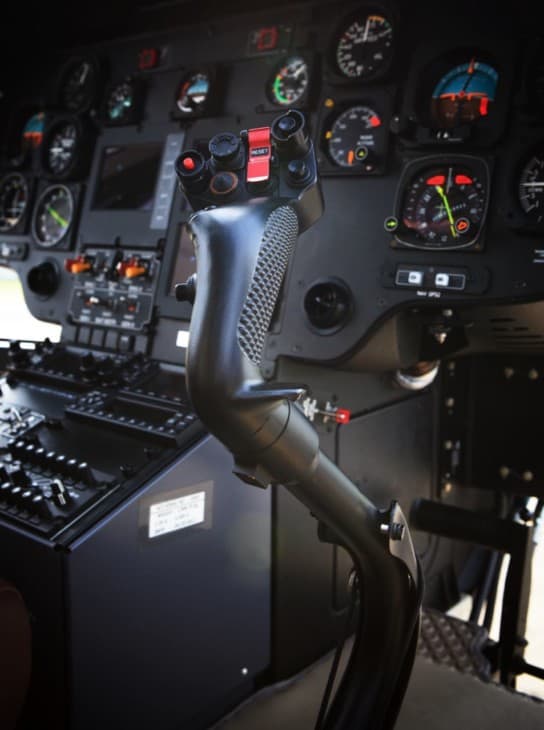
Controlling the Amount of Lift in a Helicopter
One of the essential things that pilots of any aircraft must learn to be able to do is control the amount of lift that their flying machine is producing.

Lift is the force that acts opposite gravity. To get the machine off of the ground, the pilot must make their aircraft produce a lift force greater than the force of gravity. The exact amount of lift needed will vary day-to-day depending on the density of the air and the weight of the aircraft.
If the aircraft maintains a steady altitude during flight, it must make a lift force that is precisely equal to gravity. And finally, if they wish to descend, they’ll need to reduce the lift force slightly.
So how do pilots control the amount of lift in a helicopter? From the cockpit, the pilot can do only two things.
First, the pilot could make the rotor blades spin faster. This has some critical limits, however. For one thing, the engine can only spin the system so fast. And like all other motors and spinning objects, there is a designed RPM (rotations per minute) limitation.
Furthermore, the rotor blades are large objects, and their tip velocities can easily exceed safe limits. Should supersonic shockwaves be allowed to form at any point along the rotor blade, a dangerous stall or physical damage to the blades can occur. For this reason, there is are critical RPM speed limits on the rotor blades.
Since the rotor speed can’t be varied very much, the thing that controls the helicopter’s lift most is the pitch of the blades. The pilot can command more lift from the craft by increasing each rotor blade’s angle of attack (AOA).
Controlling a Helicopter in Flight
Of course, the pitch of the blades is closely tied to the speed of rotation. So as the AOA is increased, more power is needed to maintain the speed of the rotors at a constant RPM. So the simple act of getting more lift from a helicopter is actually very complicated.
To increase the AOA, the pilot pulls up on the collective control. This is commonly called the “side stick” since it is to the pilot’s left-hand side. As the control is raised, the AOA is increased, and lift increases.
The extra drag on the rotors from the increased AOA is going to slow down their rotation. So, in addition to increasing the collective, the throttle must be increased to maintain a constant rotor speed. On most newer choppers, the collective and throttle controls are tied together.
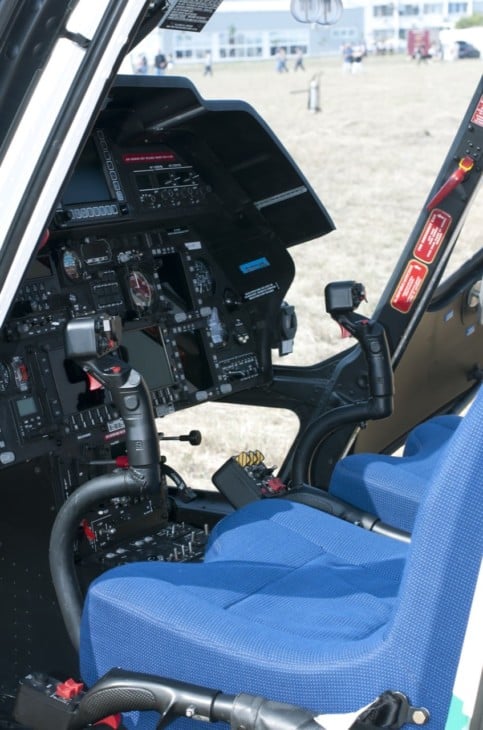
By adding power to the rotors, torque is increased. The pilot must use the anti-torque pedals to correct the turning tendency introduced as the throttle increases.
When the lift is reduced to enter a hover or descend, all of these things must be done in reverse. Throttle and pedal are reduced as the collective is lowered.
What Can a Helicopter Do?
The fact that a helicopter does not have to move forward through the air to maintain its lift gives it the freedom to do things that airplanes cannot.
For one, a helicopter can hover motionless in midair. A helicopter can also spin on its axis during a hover. The chopper can start flying in any direction from a hover—forward, sideways, or in reverse.
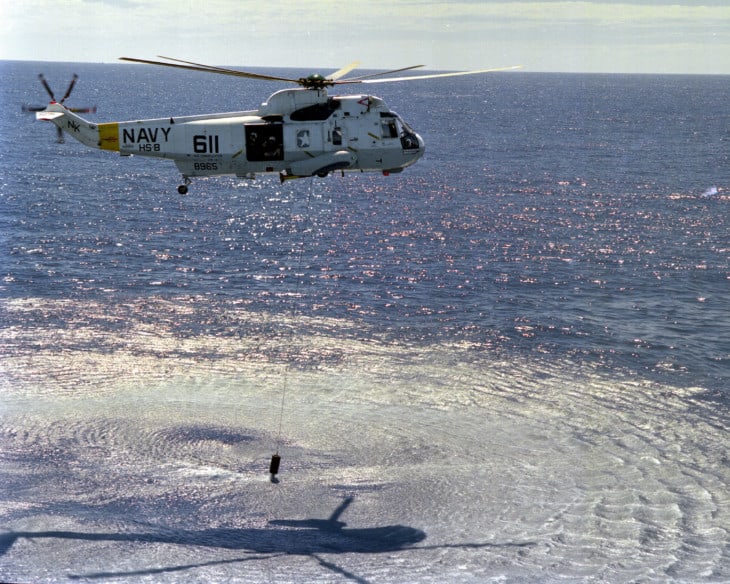
These things combined make helicopters some of the most maneuverable flying machines ever to grace the skies.
If you’re curious and would like to learn more about the inner workings and how to fly a helicopter, check out the FAA’s Helicopter Flying Handbook, available for free download online. Chapter 2 deals with the fundamentals of flight and the aerodynamics of helicopters.
Related Posts
